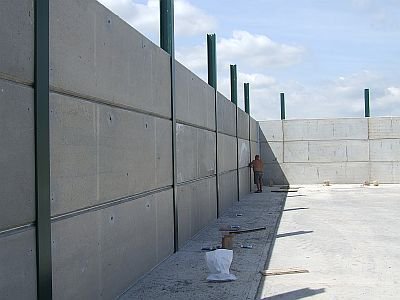This is a guest post by Philip White
Concrete has been used for many years for providing a permanent or temporary barrier, or blockade in a variety of situations. One of the most common applications is for concrete barriers on the highway either in the centre of the road to divide opposite lanes of motorways, or for traffic diversion and channelling during work on the highways.
The central highway barriers can be cast onsite or ‘insitu’, or they can be precast by a specialist precast concrete manufacturer in a factory and delivered to site. The concrete barriers are usually made using a high grade of concrete, typically between C40 and C60, which would be achieved after 28 days of the concrete curing. If the concrete barriers are required to withstand loads, or impact from vehicles, then a structural engineer would design the barriers using steel bars and mesh to add strength to the structure.
Concrete barriers can also be a temporary solution with some companies offering a concrete barrier hire service to local authorities, companies and private individuals. These temporary concrete barriers can me for a multitude of situations including; traffic calming and diversion, land protection and event security.
Depending on the application the concrete barriers may be required to comply with specific structural design criteria, this is especially important if a concrete barrier hire company is supplying concrete barriers for highway use. If this is the case then a TVCB (Temporary Vehicle Crash Barrier) may be required. if the concrete barriers are simply to provide a barrier on a piece of land, or a car park opening and keep unwanted visitors off, then a simple block of concrete would suffice and this will not require any additional reinforcement. This type of precast concrete barrier is much cheaper to manufacture and therefore they are usually cheaper to hire.
